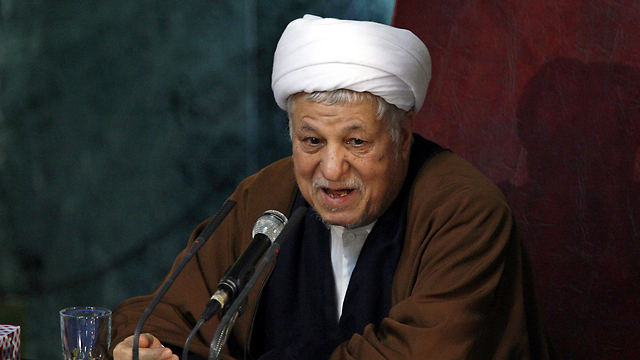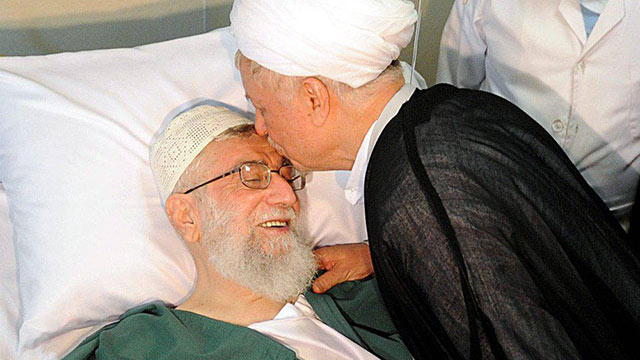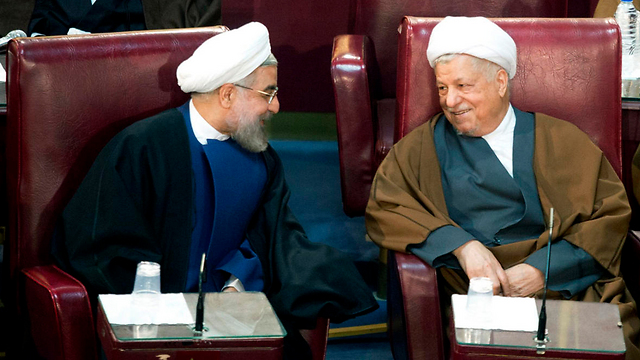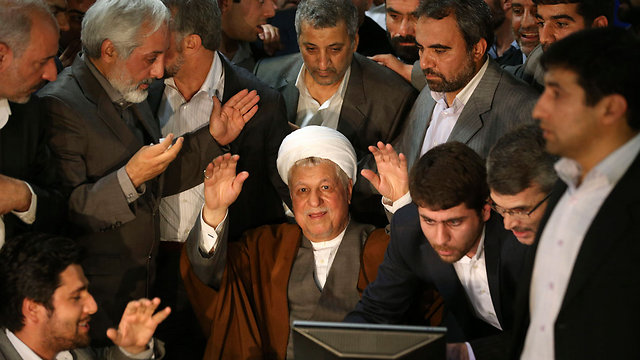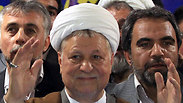
The death of Akbar Hashemi Rafsanjani, one of the Islamic Republic of Iran’s founders
Op-ed: The passing of one of Islamic Republic's Founding fathers, whose record is admittedly far from unblemished, represents a blow to the fortunes of reformists and moderates.
The death of Akbar Hashemi Rafsanjani, one of the Islamic Republic of Iran’s founding fathers, represents not just the loss of an elder statesman. It’s a political blow to the fortunes of reformists and moderates in Iran for three main reasons: Rafsanjani’s revolutionary street cred; his absence from the Assembly of Experts—the body that selects the next Supreme Leader; and his promotion of republicanism within Iran.
Hashemi Rafsanjani’s power stemmed not from his resume—Friday Prayer Imam, Iran-Iraq War commander, Parliament Speaker, President—but from his relationship with the leader of Iran’s Islamic Revolution Ayatollah Ruhollah Khomeini. He was one of the few members of Khomeini’s inner circle still active on the political scene in Tehran. In fact Iran’s current Supreme Leader, Ayatollah Ali Khamenei, owes his political career to Rafsanjani.
In 1978, when Ayatollah Khomeini announced the formation of an Islamic Revolutionary Council from Paris, it was Rafsanjani who suggested Khamenei join—Khamenei was a mid-ranking cleric living at the time in Mashhad. In 1989, when Khomeini died, it was Rafsanjani yet again who invoked his special relationship as one of Khomeini’s key lieutenants to push for the elevation of Khamenei as Supreme Leader, disclosing that Khomeini revealed his choice of Khamenei on his deathbed.
This was Rafsanjani’s power in action—the ability to speak authentically and authoritatively as a disciple of Khomeini and in the process, serving as political kingmaker.
Despite his ability to capitalize on being an original revolutionary, Rafsanjani was not bulletproof. In 2015, his son was imprisoned on corruption charges; in 2013, the Guardian Council nixed his bid for an encore as president; and in 2011, he was ousted from the chairmanship of Iran’s Assembly of Experts, in no small part due to his perceived sanctioning of the “seditionists” of Iran’s Green Movement, protesting the reelection of Mahmoud Ahmadinejad in 2009.
Nevertheless, Rafsanjani was the ultimate survivor in the rough-and-tumble of Tehran politics. In recent years, he was godfather of the modern marriage of convenience between pragmatists and reformists in Iran. In the 2013 presidential election, Rafsanjani, a long time pragmatist, endorsed Hassan Rouhani, alongside Iran’s only former reformist president Mohammad Khatami, who had previously served as culture minister in Rafsanjani’s cabinet.
Later, in the 2016 parliamentary and Assembly of Experts elections, the Rafsanjani and Khatami played a pivotal role in the building of the List of Hope that won all 30 seats in Tehran—the largest bloc in the legislature. With the media effectively banned from mentioning Mohammad Khatami—he was prohibited from even attending Rafsanjani’s funeral—Rafsanjani’s passing deprives the reformists and moderates of a protector with access, standing, and power.
Rafsanjani’s absence from the sanctum sanctorum of the Assembly of Experts is also a setback for the reformist and moderate camp in Iran. The former president—who knew the chamber well as a former chairman—had just won reelection to the Assembly, alongside 50 other allies in the 88-seat body. Nevertheless, the Assembly’s chairman—firebrand and longtime chairman of the Guardian Council Ahmad Jannati—and his deputies will now have more room to maneuver in the event of the death of the Supreme Leader.
It was Rafsanjani, who was playing a key role in matters of succession—in 2015 he disclosed that a special committee within the Assembly had been formed to develop a list of suitable candidates for Khamenei’s replacement. That Rafsanjani was engaged in such a task was not surprising, as his words during the debate in 1989 over Khomeini’s successor swayed the Assembly away from the formation of a leadership council in lieu of a supreme leader—Ali Khamenei.
While President Rouhani is also a member of the Assembly, Rafsanjani’s exit from the stage now empowers hardliners like Jannati—who once proposed that Iran withdraw from the Nuclear Non-Proliferation Treaty; his deputy Ali Movahedi Kermani, a conservative who recently threatened to “raze Tel Aviv and Haifa,” and Ghorbanali Dorri-Najafabadi, a former militant intelligence minister, who is accused of masterminding the murder thousands of dissidents.
Rafsanjani himself, of course, is not without a checkered past. He stands accused of green lighting the bombing of a Jewish community center in Buenos Aires in 1994; authorizing the murder of four Kurdish dissidents in Berlin’s Mykonos café in 1992; and suppressing thousands of dissidents while president. Yet, on the spectrum of modern Iranian political ideology, he proved more utilitarian than dogmatic.
In this vein, Rafsanjani was known in Iran for often championing republicanism over theocracy—especially in his later years. During the 2009 unrest over allegations of vote rigging in favor of the reelection of Mahmoud Ahmadinejad, Rafsanjani invoked his mentor Khomeini publicly to emphasize that the “people’s will” must be done. He had previously written to the Supreme Leader, asking him to personally ensure the election would be fair. When he was barred from running for the presidency in 2013—by the unelected Guardian Council—he lashed out, proclaiming “I don’t think the country could have been run worse, even if it had been planned in advance.”
With reformists tying their immediate political fortunes to the coalition that Rafsanjani built, they are now tethered to his protégé, Hassan Rouhani, a figure without the same degree of pedigree, prestige, and position. It remains to be seen whether Rouhani can be an effective hedge against the likes of Ayatollah Mesbah Yazdi—the ultimate anti-republican with an entrenched clerical following, who once said, “(t)hose who have seen the Imam’s statements in his speeches and books know that the Imam had used the words ‘the Islamic system…’ The Imam uses the people’s votes (only) to convince the other parties (to come on board with his ideas.)” The track record of former presidents and prime ministers at maintaining political relevancy—Ahmadinejad, Khatami, Mousavi—does not inspire confidence.
Jason M. Brodsky is the Policy Director of United Against Nuclear Iran.
The opinions expressed in this article are the author's own and do not reflect the view of Ynetnews or any of its affiliate publications.










